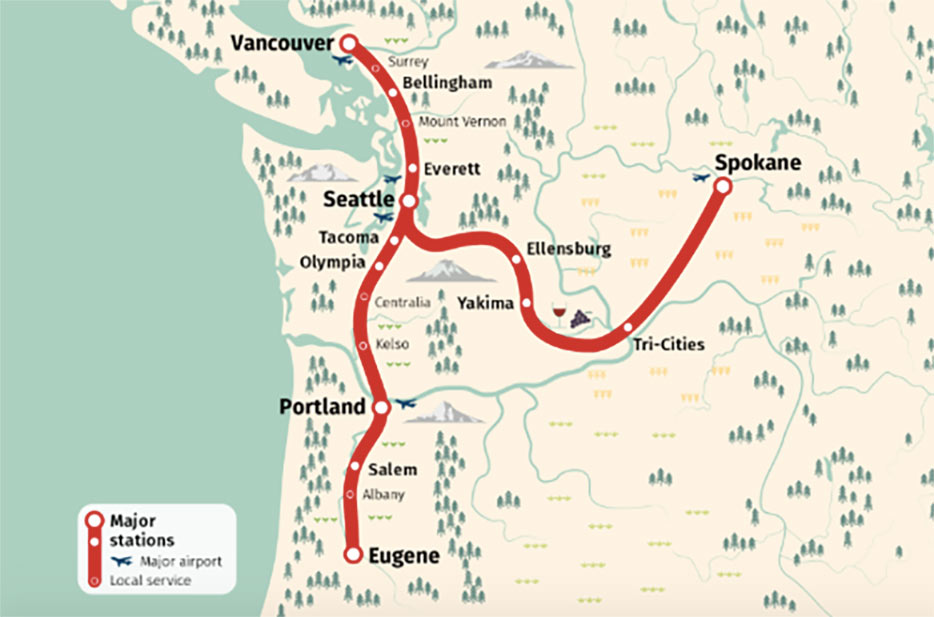High speed case for North America north-west-coast 09 Aug 2018
Currently it takes about eight hours to travel between Vancouver, British Columbia, in Canada via Seattle in Washington State and on to Portland, Oregon, in the USA. While travel is possible by car or bus, there is currently no reliable rail service. To improve journey times between the cities, the Washington State Department of Transportation (WSDOT) is conducting a feasibility study and has asked WSP to prepare a business case analysis for an ultra-high speed ground transportation system connecting Vancouver, Seattle, and Portland.
The proposed 250 miles per hour system (400km/hr), would be between 270 miles and 295 miles (435-475km) long and would reduce travel times from Vancouver to Seattle and Seattle to Portland to one hour each (Fig 1).
The study, which should be completed by mid-2019, is being conducted by an international, public-private partnership that comprises WSDOT, the Oregon Department of Transportation, the British Columbia Ministry of Jobs, Trade and Technology and a group of private enterprises including Microsoft Corp. A preliminary analysis conducted in 2017 confirmed the need for a more in-depth analysis of the system’s feasibility and the Washington State Legislature has appropriated funds to the study, with additional monies coming from other partners of the PPP.
WSP is being asked to identify potential ultra-high-speed transportation corridors through the Vancouver-Seattle-Portland region. There is potential for sections of the route to be built underground since a dedicated new rail track will need to be constructed and the route passes through areas where there will be no space above ground to accommodate it, The firm is also responsible for refining cost estimates, estimating potential ridership, and analysing previous US and international infrastructure and high-speed rail projects for problem-solving solutions and lessons learned.
The project is expected to cost an estimated US$40 billion which would be shared by the two US States and the Canadian Province, with additional support from national federal grants, and private business investment from companies already committed to the idea including technology mega-corporation Microsoft.
“This project is an exciting opportunity to improve communities, grow the economy, and open doors for people and businesses to prosper across an entire region in a sustainable, future-focused way,” said Karen Hedlund, WSP Project Manager. “Imagine the impact of a large company in Seattle able to access a workforce in Vancouver that is only an hour away, or a person able to live in a rural community outside of Portland, and commute daily to Seattle.”
WSP is involved with developing high-speed rail systems in the US and internationally. It is a rail delivery partner to the California High Speed Rail Authority for its statewide high-speed rail system, and is providing engineering support for the Texas Bullet Train between Houston and Dallas.
References
- California high speed rail designs – TunnelTalk, April 2018
- America's high speed rail aspirations – TunnelTalk, September 2006
|
|
|
|
|
Add your comment
- Thank you for taking the time to share your thoughts and comments. You share in the wider tunnelling community, so please keep your comments smart and civil. Don't attack other readers personally, and keep your language professional.


